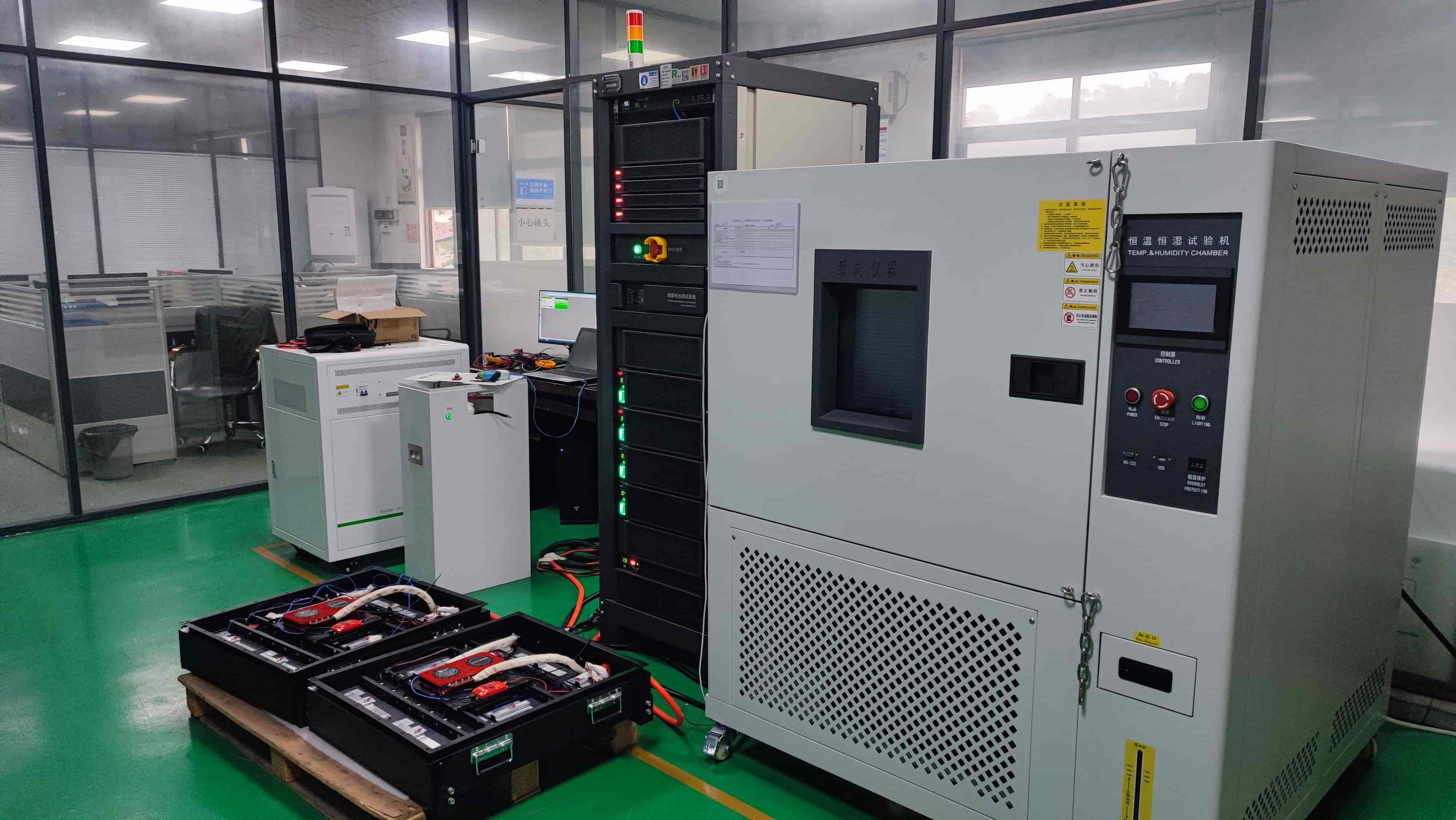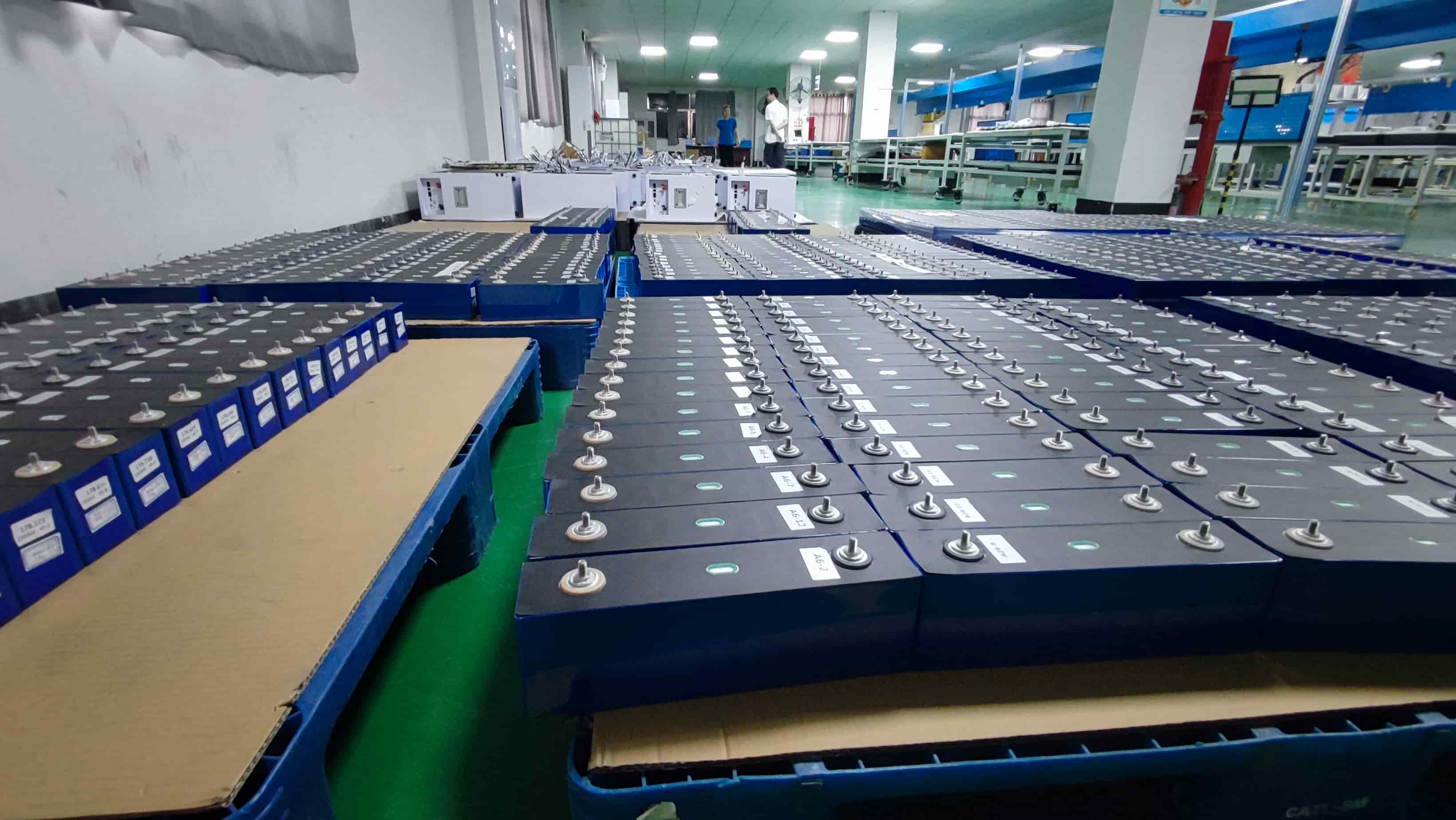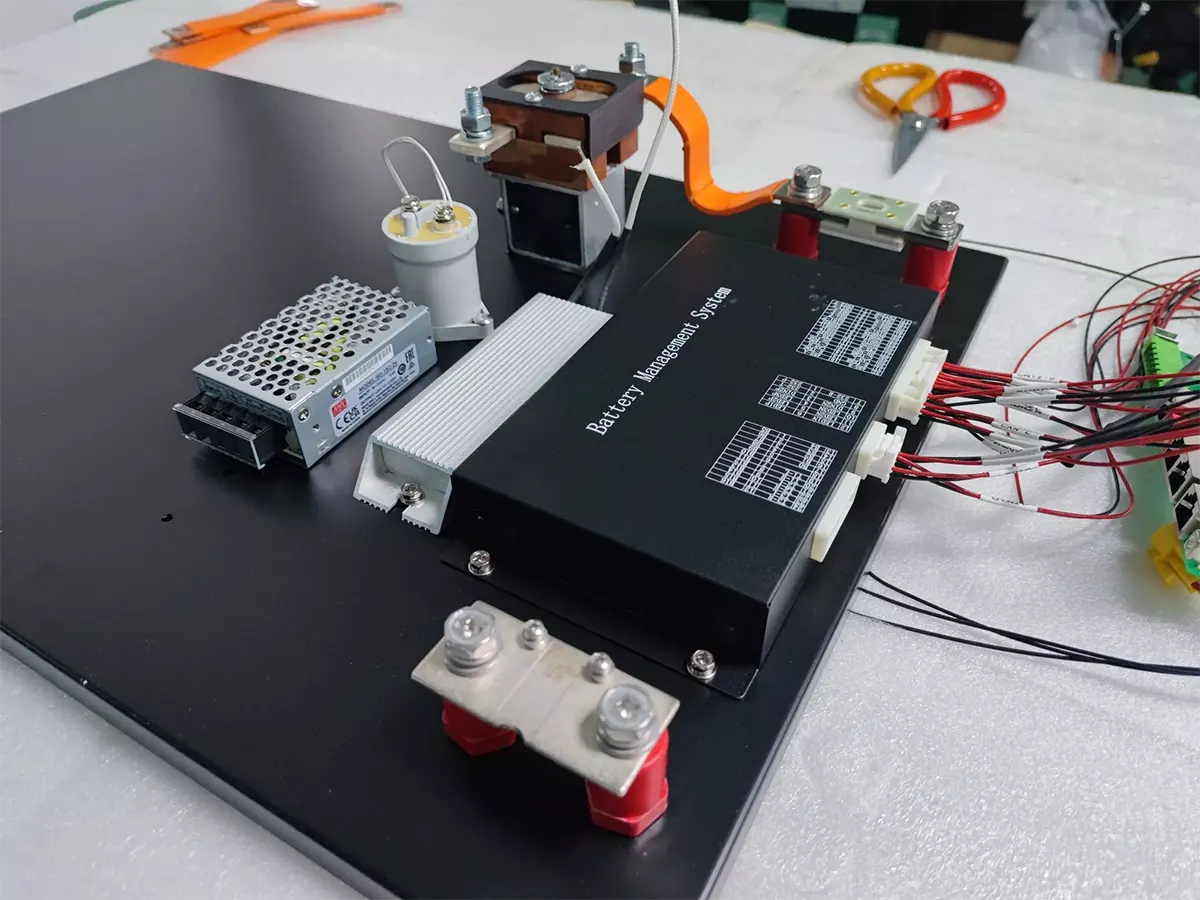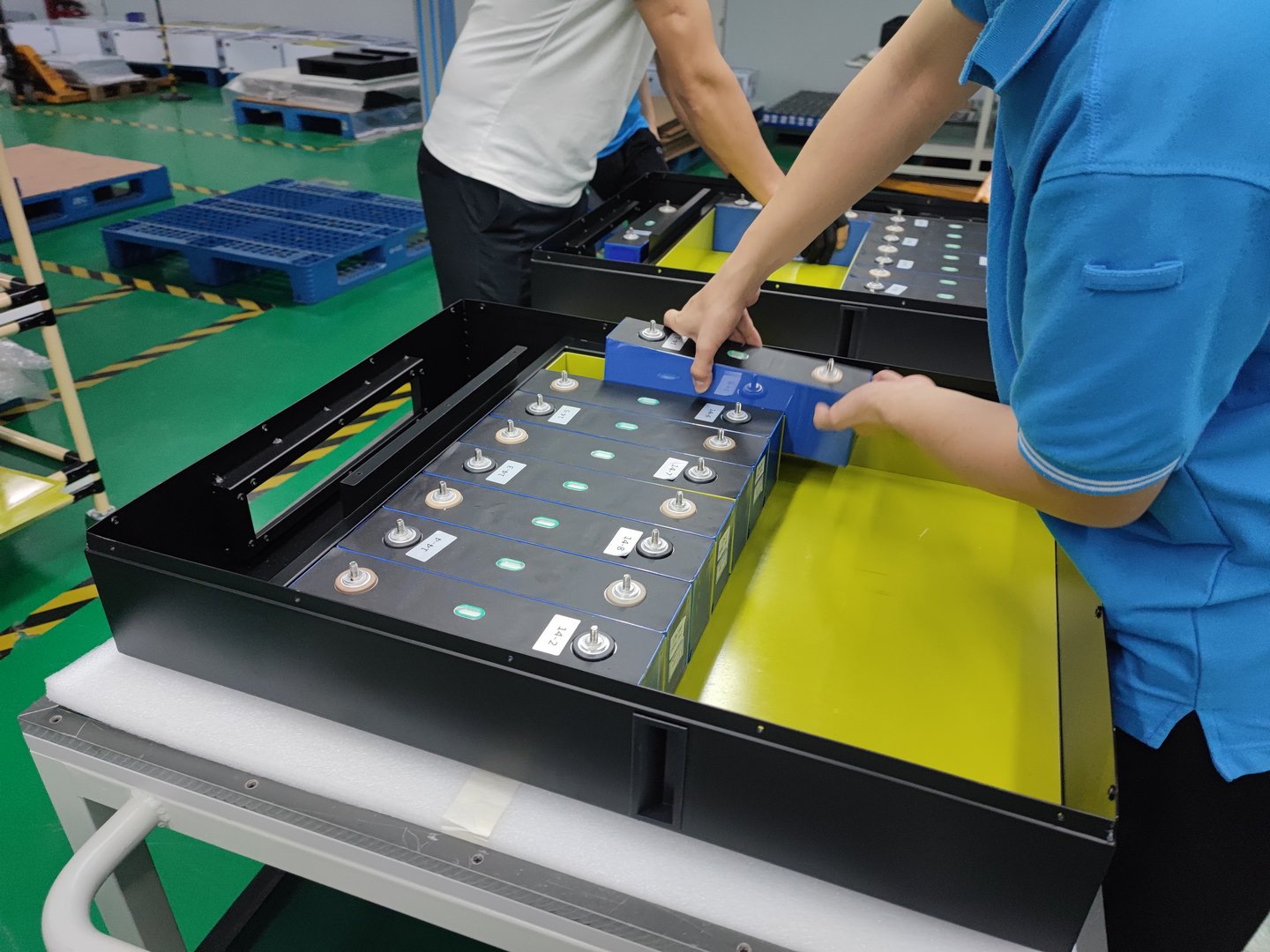Efficient Ways to Connect Lifepo4 Batteries in Parallel

Connecting Lithium Iron Phosphate (LiFePO4) batteries in parallel is a process that requires technical expertise and knowledge of the correct safety protocols. This article provides an overview of how to successfully connect LiFePO4 batteries in parallel, focusing on the relevant principles and steps involved. The aim is to help readers gain insight into the process and increase their confidence when connecting these types of batteries safely.
The use of LiFePO4 batteries has grown significantly over recent years due to their lightweight design, high energy density, low self-discharge rate, and extended cycle life compared with other battery chemistries such as nickel-metal hydride (NiMH).
Connecting them in parallel can be beneficial for applications where higher power output or longer run times are required. However, it is important to understand the implications of this configuration before attempting it so that any potential risks are minimized.
In order to ensure a successful connection, there are several key points that must be addressed including selecting compatible cells, establishing safe operating currents, connecting cables correctly, and monitoring cell voltages during operation.
By following these guidelines carefully, users will have greater control over their projects and will be able to take advantage of the many benefits associated with LiFePO4 battery connections in parallel.
Definition Of Lifepo4 Battery
Lithium-ion phosphate (LiFePO4) batteries are rechargeable battery cells that have been developed as a safer alternative to traditional lithium-ion batteries.
They contain an inorganic cathode material and provide higher energy density, longer cycle life, better safety performance, and lower cost than other types of rechargeable batteries. LiFePO4 cells can be used for a wide range of applications such as portable electronics, electric vehicles, power tools and medical equipment.
The advantages of LiFePO4 over other types of rechargeable batteries include their high rate capability and relatively low self-discharge rate. The cell voltage is well maintained during heavy loads due to its structure which makes it ideal for use in projects requiring frequent discharging and recharging cycles.
Additionally, the chemical composition of LiFePO4 provides good thermal stability making them suitable for use in high-temperature environments where other types may fail quickly. Furthermore, they have excellent resistance to shock and vibration compared with other batteries making them very resilient to physical impacts.
The main disadvantage of LiFePO4 is its limited capacity when compared to conventional lead acid or nickel metal hydride (NiMH) chemistries; however, this limitation can be mitigated by connecting multiple cells together in series or parallel configurations allowing the user greater flexibility in designing custom battery packs according to specific requirements.

Advantages Of Connecting In Parallel
Connecting lifepo4 batteries in parallel has many advantages. One of the main advantages is that it enables current to be drawn from multiple cells at once, increasing the total available capacity.
Additionally, connecting in parallel increases the overall voltage of the battery pack while keeping the same cell count. This allows for larger capacity packs without having to increase the number of individual cells required.
Finally, connecting in parallel provides a more reliable and efficient power supply since each cell contributes equal amounts of current and voltage during discharge cycles.
Parallel connections also offer improved safety features when compared to series configurations; if one cell fails or becomes damaged, the other cells remain unaffected which prevents further damage or catastrophic failure.
Furthermore, due to their increased efficiency and reliability, paralleled lifepo4 batteries are used widely in applications such as electric vehicles (EVs), solar energy storage systems and aerospace applications where safety is paramount.
In addition to its safety benefits, parallel connection offers cost savings by allowing users to purchase fewer individual cells than would be needed with a series configuration. Moreover, since each cell experiences equal charge/discharge cycles over time, this improves performance longevity and reduces maintenance costs associated with replacing dead cells in series configuration setups.
Overall then, connecting lifepo4 batteries in parallel provides numerous benefits that make them an ideal choice for various applications requiring high-performance energy storage solutions.
Tools Needed For The Connection Process
When connecting multiple LiFePO4 batteries in parallel, the right tools are necessary to ensure a secure connection.
First, the soldering iron and solder wire must be of appropriate size for this task. Then, it is also helpful to have flux paste and it should be applied before soldering, this will help prevent oxidation and improve contact quality between metal parts.
Finally, high-quality electrical connectors such as Anderson Powerpole plugs or ring terminals should be used along with heat shrink tubing to protect connections from corrosion and shorts.
High voltage multimeter readings across each cell pair are necessary for checking polarity, voltage balance between cells, series resistance, and current flow during charging/discharging cycles.
If available, an infrared thermometer should be used to measure the temperature of cells while testing them individually or when connected in series or parallel configurations so that any potential overheating issues can be identified quickly.
Finally, safety glasses should always be worn when working with LiFePO4 batteries since they may release gas if overcharged or shorted out. Mechanical protection such as gloves and a face shield is recommended if possible damage due to sparks is anticipated.

Calculating Voltage And Capacity Requirements
Having gathered the necessary tools, it is important to calculate voltage and capacity requirements for connecting lifepo4 batteries in parallel. To do this accurately, three key elements must be considered: battery cell count, desired total system voltage (V), and required capacity (Ah). The following steps should be taken to ensure an effective connection process:
- Determine the number of cells you will use in each battery pack. This can range from 2-8 cells depending on your application.
- Calculate the nominal voltage of each individual cell by multiplying its rated voltage (typically 3.2 V) by the number of cells in the pack. For example, if there are six cells in a pack, then the nominal voltage would be 6 x 3.2 = 19.2 V
- Next, determine how much current (in amps) your device or application needs to run properly. You need to know this information so that you can select batteries with sufficient power ratings for your application's energy requirements
Finally, divide the desired total system voltage by the nominal cell voltage to determine how many packs of batteries you need for your project’s power requirements.
E.g, if you want 24 volts of total system voltage and have four-cell packs with a nominal cell voltage of 12v each, then you will need two four-cell packs connected in parallel for a total of eight cells at 24 volts DC output.
When making these calculations, make sure to include safety margins as well as additional reserves related to temperature variation and other unexpected factors that could affect performance over time such as charging cycles or environmental conditions like humidity or altitude changes which may cause significant shifts in energy delivery levels between charge/discharge cycles.
Preparing The Batteries For Connection
Prior to connecting LiFePO4 batteries in parallel, it is important to ensure that all batteries have the same voltage and capacity. This can be accomplished by measuring each battery's open circuit voltage (OCV) with a multimeter or cell balancer device. It is also recommended to check the internal resistance of each battery using an impedance tester.
The table below outlines the key points for preparation before connecting LiFePO4 batteries in parallel:
| Parameter | Description | Recommended Value |
|---|---|---|
| Voltage | OCV | Equal on all cells/batteries |
| Capacity | Ah | Within 5-10% of one another |
| Internal Resistance | mΩ | Less than 0.05 Ω difference between any two cells/batteries |
Once these parameters are met, then the next step is to connect them safely together without creating sparks or short circuits. To do this, use copper lugs or welding rods when making connections to prevent arcing and ensure a secure connection.
As well as ensuring good electrical contact between the terminals, extra precautions should be taken such as wearing safety goggles and gloves while handling live wires during installation.
Additionally, it may be necessary to fuse each cell in order to protect against overcharging and discharging situations which could potentially cause serious damage if not mitigated appropriately.
By following these guidelines, users can confidently prepare their LiFePO4 batteries for safe parallel connection in order to increase overall system capacity whilst maintaining efficiency and longevity of operation.

Connecting The Positive Terminal
When connecting LifePO4 batteries in parallel, it is important to connect the positive terminal first. This helps ensure that all of the cells are at the same voltage before connection and avoids any potential short circuits or other issues during connection.
The following 3-step process should be followed when connecting multiple LifePO4 batteries in parallel:
- Connect a fused cable between two battery terminals on one cell and then add an additional set of cables between those same terminals on each subsequent cell
- Make sure all connections are secure by using appropriate connectors such as screw terminals or ring terminals
- Verify that no bare wires are exposed and double-check all connections for tightness
In order to properly distribute current through all cells in a parallel configuration, it is essential to use fuses with identical current ratings for each connected pair of cells. The fuse should be placed close to the battery so that if there is an overcurrent situation, only the single affected cell will shut down instead of affecting the entire system.
Additionally, make sure that each fused wire has a sufficient length from its respective batteries so they do not interfere with the normal operation of other components in the system.
By following these steps, users can avoid potential problems associated with the incorrect installation while ensuring reliable power delivery throughout their system. Ultimately, proper installation procedures provide peace of mind and enable the successful utilization of multiple LiFePO4 batteries in parallel configurations.
Connecting The Negative Terminal
When connecting LiFePO4 batteries in parallel, the negative terminal of each successive battery must be connected to the positive terminal of another. This is necessary for balancing the charge and discharge rates between cells, as well as ensuring an equal distribution of current flow throughout the system.
An analogous concept can be drawn from an electrical circuit where current flows through a resistor network; when two resistors are placed in series, they share a proportionate amount of energy based on their resistance value. Similarly, with LiFePO4 cells arranged in parallel, it is important that all terminals remain electrically neutral so that each cell shares an equal portion of the total load.
The process of connecting Lifepo4 batteries together requires careful attention to detail and precision in order to ensure safe operation. When linking multiple units together via cables or jumper wires, it is essential to maintain consistency among connections otherwise imbalances may occur which could lead to overheating or other dangerous situations.
Additionally, proper strain relief should be taken whenever possible to reduce any potential risks associated with loose wiring.
Connecting LiFePO4 batteries in parallel has become increasingly popular due to its versatility and cost-effectiveness compared to traditional methods such as soldering or welding. With this technology now widely available, engineers have greater control over how power is distributed throughout their systems while also minimizing maintenance costs and downtime associated with regular replacement cycles.
Balancing Cells And Monitoring Voltage
Connecting the negative terminal of a lithium-ion battery pack is an important step to ensure safe operation and long life. To further improve system performance, it is essential for users to balance individual cells in the battery pack as well as monitor their voltage levels throughout their lifetime.
The BMS can ensure that each cell maintains similar charge/discharge characteristics which may be impaired by internal shorts or defects within one or more cells during manufacture, aging, heating or other conditions. Monitoring voltage helps detect and identify any potential problems before they lead to catastrophic failure.

The process of balancing cells requires equalizing currents flowing between all connected parallel sets of batteries within the pack. This can be done with dedicated active balancers or passive resistors. The BMS continuously transfers current from higher voltage cells to lower voltage ones until equilibrium has been achieved while passive resistors provide resistance paths when required.
BMS also has specialized monitoring systems that should also be employed to measure each cell’s open circuit voltage (OCV) levels over time to determine if there are signs of imbalance due to changes in capacity among them. Such measurements help identify weak spots in the overall battery pack so appropriate adjustments can be made accordingly before permanent damage occurs.
In addition, constant temperature control must be established through air flow management and cooling fans since thermal cycling could cause irreversible degradation leading to decreased cycle life and increased safety risks such as overheating and swelling of cells.
By maintaining optimal OCV values along with proper temperature regulation throughout its lifespan, a LiFePO4 battery will remain healthy and perform optimally for years to come without compromising on efficiency or reliability.
Safety Considerations
When connecting LiFePO4 batteries in parallel, it is important to consider safety since parallel connections can create dangerous conditions. The following five points should be taken into account:
| Number | Points to Consider |
|---|---|
| 1. | Voltage balancing |
| 2. | Cell Discharge |
| 3. | Current Load |
| 4. | Temperature |
| 5. | Aging |
Voltage Balancing - It is essential that the voltage of each cell remains within a certain range as cells with different voltages will cause current imbalance and generate heat due to high internal resistance, which may cause damage or even fire if not monitored closely. To avoid this issue, all cells must be balanced and checked regularly.
Cell Discharge - When LiFePO4 batteries are connected in parallel, they tend to discharge at different rates depending on their internal characteristics and external environment; therefore it is important to ensure that all the cells remain within an acceptable discharge rate for best performance and efficiency while protecting them from over-discharging. This can be done by using appropriate monitoring systems such as Battery Management System (BMS).
Current Load - Connecting multiple batteries in parallel increases the overall system’s capacity but also raises its load capability significantly; thus extreme caution should be taken when applying heavy loads onto a battery pack containing LiFeO4 batteries connected in parallel. Otherwise, overheating might occur leading to serious damages or even fire hazards.
Temperature - Although LiFePO4 batteries have higher thermal stability compared to other lithium-based chemistries, their maximum temperature limit should still be kept below 65°C for optimal performance and lifetime expectancy; otherwise degradation of capacity and cycle life could take place prematurely due to thermal runaway reactions caused by excessive temperatures inside the cells during operation or charging process.

Aging - As previously mentioned, long-term aging effects cannot be avoided completely when dealing with LiFePO4 batteries; hence it is very important to keep track of how many charge/discharge cycles your battery has gone through since these processes directly affect its remaining capacity over time and consequently degrade its usable energy content sooner than expected if not managed properly.
Cautions When Working With High-Voltage Batteries
It is important to consider safety when working with high-voltage batteries. When connecting LiFePO4 (Lithium Iron Phosphate) batteries in parallel, there are several cautions that should be taken into account.
Firstly, ensure the cells have similar capacities and voltages before attempting to connect them in parallel. This will help prevent overcharging or discharging one cell more than another which can lead to an imbalance between cells, leading to potential fire hazards.
Secondly, use appropriate cabling for connections, ensuring it is rated for the voltage of all cells being connected together.
Thirdly, make sure that the current carrying capacity of each connection matches the combined current demand of all cells being connected together.
Finally, monitor the battery during operation to detect any signs of problems such as overheating or excessive current draw.
It is also wise to implement a periodic maintenance program on your battery system to check for anything out of the ordinary and take corrective action if needed.
Additionally, always wear protective gear such as gloves and eye protection when handling high-voltage batteries and their associated wiring components. Taking these simple steps can greatly reduce risk while working with high-voltage LiFePO4 batteries:
- Ensure Cells Have Similar Capacities & Voltages
- Use Appropriate Cabling Rated For Voltage Of Connected Cells
- Match Current Carrying Capacity To Combined Cell Demand
- Monitor Battery During Operation & Implement Maintenance Program
By following these tips you can keep yourself safe while taking advantage of the many benefits offered by lithium iron phosphate batteries - increased energy storage density, longer lifespan, higher efficiency ratings and lighter weight compared to other types of rechargeable batteries.
Tips For Maintaining Lifepo4 Batteries In Parallel
When connecting LifePO4 batteries in parallel, it is important to remember that each battery should have the same charge level. This means that all cells must be charged and discharged together, at the same time. This ensures that all of the batteries are balanced and will maintain their maximum capacity over time.
To ensure a successful connection between multiple LiFePO4 batteries, use high-quality interconnects such as copper or nickel-plated cables. These materials provide superior conductivity with minimal voltage drop which helps protect against electrical arcing.
Additionally, make sure that your application has proper cooling mechanisms in place to keep temperatures low during charging cycles. Temperature extremes can reduce cell performance and lead to premature failure if not monitored closely.
Finally, when handling LiFePO4 batteries always wear protective gear such as gloves and goggles. The electrolyte contained within LiFePO4 cells can cause skin irritation so take appropriate precautions while servicing them. It is also recommended to periodically check connections for any signs of corrosion or damage which could impact the performance of your system as well as safety concerns.
Taking these steps will help you achieve optimal results from your LiFePO4 battery system over its lifetime.
Potential Issues To Look Out For After Connection
After connecting LiFePO4 batteries in parallel, it is important to be aware of potential issues that may arise. There are three main areas that should be monitored post-connection: 1) Charge and Discharge Balance 2) Safety 3) Long-Term Performance.
Charge and discharge balance must be maintained when connecting LiFePO4 batteries in parallel as individual cells can become overcharged or undercharged if the system is not properly balanced. This can lead to safety risks such as thermal runaway and a decrease in battery performance due to capacity loss or voltage mismatches between cells. It is therefore necessary to have an active monitoring system in place that will equalize charge distribution across all connected cells.
Safety should also be considered after connection with respect to device failure, overheating, fire risk, current leakage, etc. To ensure the safe operation of the system, appropriate safety mechanisms (fuses, breakers, sensors) should be installed prior to attempting any connections. Additionally, proper insulation methods should always be used during installation to avoid any electrical hazards from occurring.
Finally, the long-term performance of the connected batteries must never be overlooked; regular maintenance checks should be conducted on an ongoing basis for both single-cell level and overall pack conditions. Regular tests for internal resistance measurements along with impedance tracking systems can help detect aging symptoms early and provide insight into how best to manage/maximize the longevity of the connected battery packs.
Alternative Connection Methods
The configuration of batteries in a system is often likened to the flow of water. Like water, electricity seeks the path of least resistance and must be skillfully directed for effective results. When connecting two or more lifepo4 batteries in parallel, there are alternative methods that can be used depending on specific needs.
Table 1: Alternative Connection Methods
| Method | Pros | Cons |
|---|---|---|
| Series | High Voltage Output | Low Current Capacity |
| Parallel | High Current Output | Lower Voltage Than Series |
| Combination | Increased Flexibility & Efficiency | Complex Connections Required |
Each method has its own advantages and disadvantages, but understanding how they work together can help you make an informed decision regarding your connection type. A series connection offers high voltage output while sacrificing current capacity, whereas a parallel connection provides higher current output with a lower voltage than a series connection.
If you require increased flexibility and efficiency within your system then combining both connections may be beneficial; however, it should only be done if complex connections can be managed correctly as incorrect wiring could lead to catastrophic failure.
Adding New Batteries To Existing Configuration
Adding new batteries to an existing configuration of LiFePO4 cells in parallel requires careful consideration and planning. This is because the batteries that are already connected need to be checked for their state of charge, capacity, health, etc., before connecting more batteries. The goal of adding additional LiFePO4 cells should always be to maintain a balanced system with all cells operating at similar levels of performance.
When connecting new batteries to an existing setup, it is important to ensure that they are compatible with each other and have been tested/charged individually beforehand. Because LiFePO4 cells can easily become unbalanced due to differences in charging or discharging cycles between individual cells, any mismatching between the old and new packs could cause problems.
It is also essential to check the charge level on both sets of batteries before connecting them together if one battery set has a higher SoC than the other, then there may be issues when trying to balance out the two systems later on.
Before proceeding further with joining up multiple packs, it is recommended that voltage measurements are taken from each pack’s terminals prior to connection. This will provide information about whether all of the cells within each pack are functioning properly and whether any potential short circuits or open circuits can be identified early on before causing serious damage.
After verifying these readings against manufacturer specifications, only then should connections start being made between packs. Once all necessary safety checks have been completed and verified, then it should be possible to join up multiple LiFePO4 cell configurations in parallel without issue.

Disconnecting Lifepo4 Batteries In Parallel
Disconnecting parallel connected LiFePO4 batteries is a straightforward procedure, but it must be done safely to minimize the risk of damage or injury. It should always be performed by someone experienced in working with electrical systems and following the appropriate steps for lithium-ion battery safety.
The first step in disconnecting LiFePO4 batteries from a parallel connection is to shut off all power sources connected to them, such as solar panels, chargers, inverters, etc. so that no current can flow through them.
Then, remove one of the positive terminals at a time starting from the last one added. This ensures that there will not be any possible short-circuiting when removing each terminal. For added safety measures, use insulated tools specifically designed for working on electrical circuits while doing this process. Once the terminals have been removed, unplug any wiring harnesses connecting the cells together and then unscrew the nuts holding them in place.
The final step is to physically separate the cells themselves by lifting them away from each other and storing them separately until they are needed again.
LiFePO4 batteries require special care during handling due to their high energy density; therefore it’s important to follow safe practices like wearing protective eyewear and gloves whilst performing these procedures.
Additionally, extreme caution should be taken when disposing of used LiFePO4 batteries since hazardous materials may still remain inside even if they appear empty. Following these simple guidelines can help ensure the successful removal of LiFePO4 batteries from a parallel configuration without damaging anything else along the way.
Conclusion
The connection of lifepo4 batteries in parallel offers many advantages, and when done properly it can be a highly beneficial arrangement. Careful consideration must be taken when connecting these batteries however as there are potential issues that can arise from poor connections, such as reduced capacity or even damage to the cells. With the right tools and knowledge, any user should have no difficulty connecting their own lifepo4 battery setup for efficient power delivery.
It is important to take all necessary precautions when working with electricity, especially when dealing with high-voltage lithium-ion cells such as those found in lifepo4 batteries. The most important thing to remember is that safety always comes first; proper protection equipment and an understanding of the system is essential before attempting any work on the batteries. For anyone looking to increase their energy storage capabilities, connecting lifepo4 batteries in parallel is an option worth exploring.
Connecting lifepo4 batteries in parallel offers users numerous benefits including increased energy density and flexibility for applications ranging from mobile devices to electric vehicles. When done correctly this type of configuration can provide dependable performance with low maintenance costs. It is ultimately up to each individual user whether they choose to explore this option for their specific needs but through careful preparation and attention to detail, it can prove to be a reliable source of power over time.
